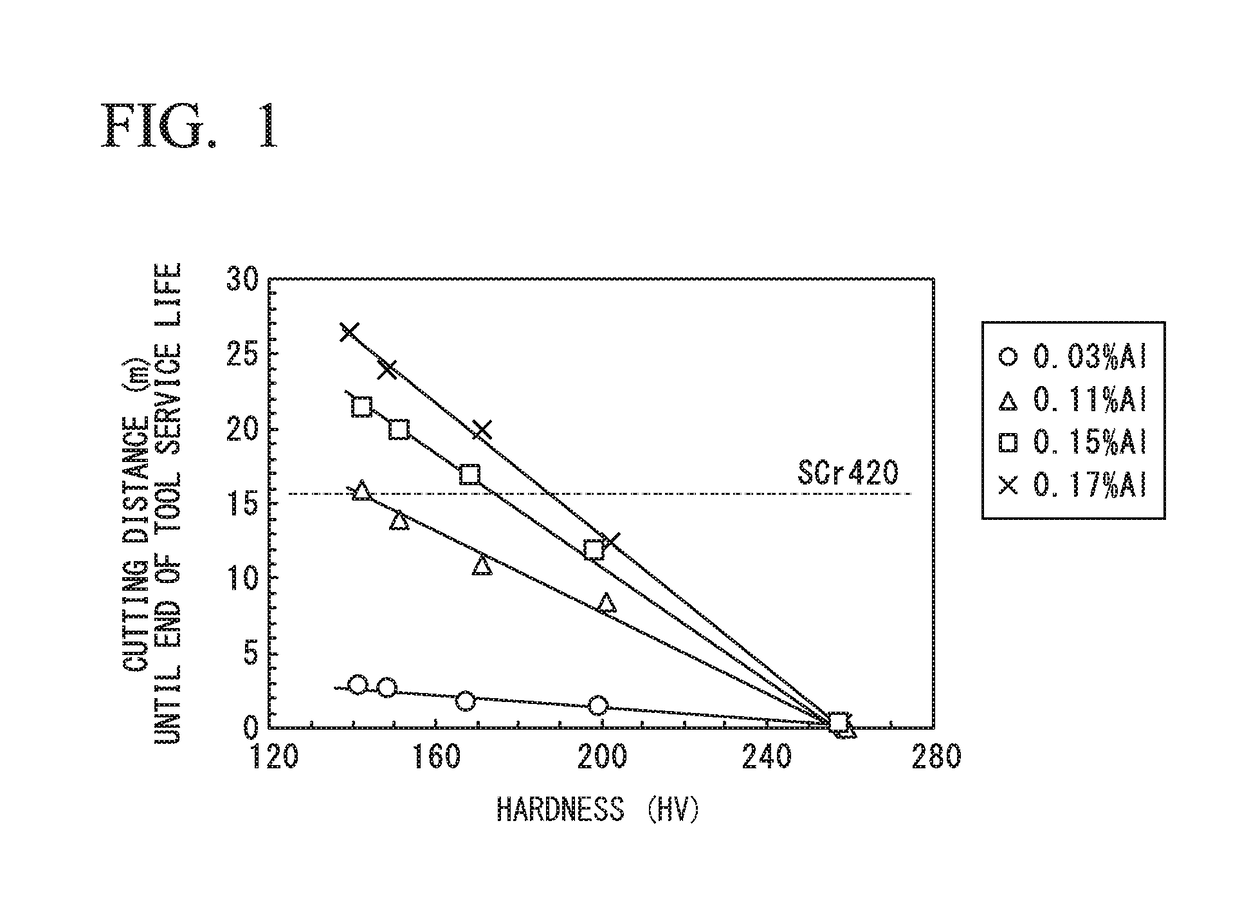Steel for induction hardening
- Summary
- Abstract
- Description
- Claims
- Application Information
AI Technical Summary
Benefits of technology
Problems solved by technology
Method used
Image
Examples
examples
[0109]Next, Examples of the present invention will be described. Production conditions of Examples are merely examples of conditions employed to check the operability and effects of the present invention, and the present invention is not limited to the examples of conditions. The present invention may employ various conditions without departing from the gist of the present invention as long as the object of the present invention can be accomplished.
[0110]Steels having the chemical compositions shown in Tables 2-1 and 2-2 were melted. During casting of Steels 1 to 28, the cooling rate between the liquidus temperature and the solidus temperature at the ¼ portion in the thickness of the slab was controlled to be 10° C. / min to 100° C. / min. However, during melting of Steel 29, the cooling rate was set to be less than 10° C. / min. The cooling rate during casting of each of the steels shown in Tables 2-1 and 2-2 was estimated on the basis of the average secondary dendrite arm spacing before...
PUM
| Property | Measurement | Unit |
|---|---|---|
| Fraction | aaaaa | aaaaa |
| Fraction | aaaaa | aaaaa |
| Fraction | aaaaa | aaaaa |
Abstract
Description
Claims
Application Information
 Login to View More
Login to View More - R&D Engineer
- R&D Manager
- IP Professional
- Industry Leading Data Capabilities
- Powerful AI technology
- Patent DNA Extraction
Browse by: Latest US Patents, China's latest patents, Technical Efficacy Thesaurus, Application Domain, Technology Topic, Popular Technical Reports.
© 2024 PatSnap. All rights reserved.Legal|Privacy policy|Modern Slavery Act Transparency Statement|Sitemap|About US| Contact US: help@patsnap.com








